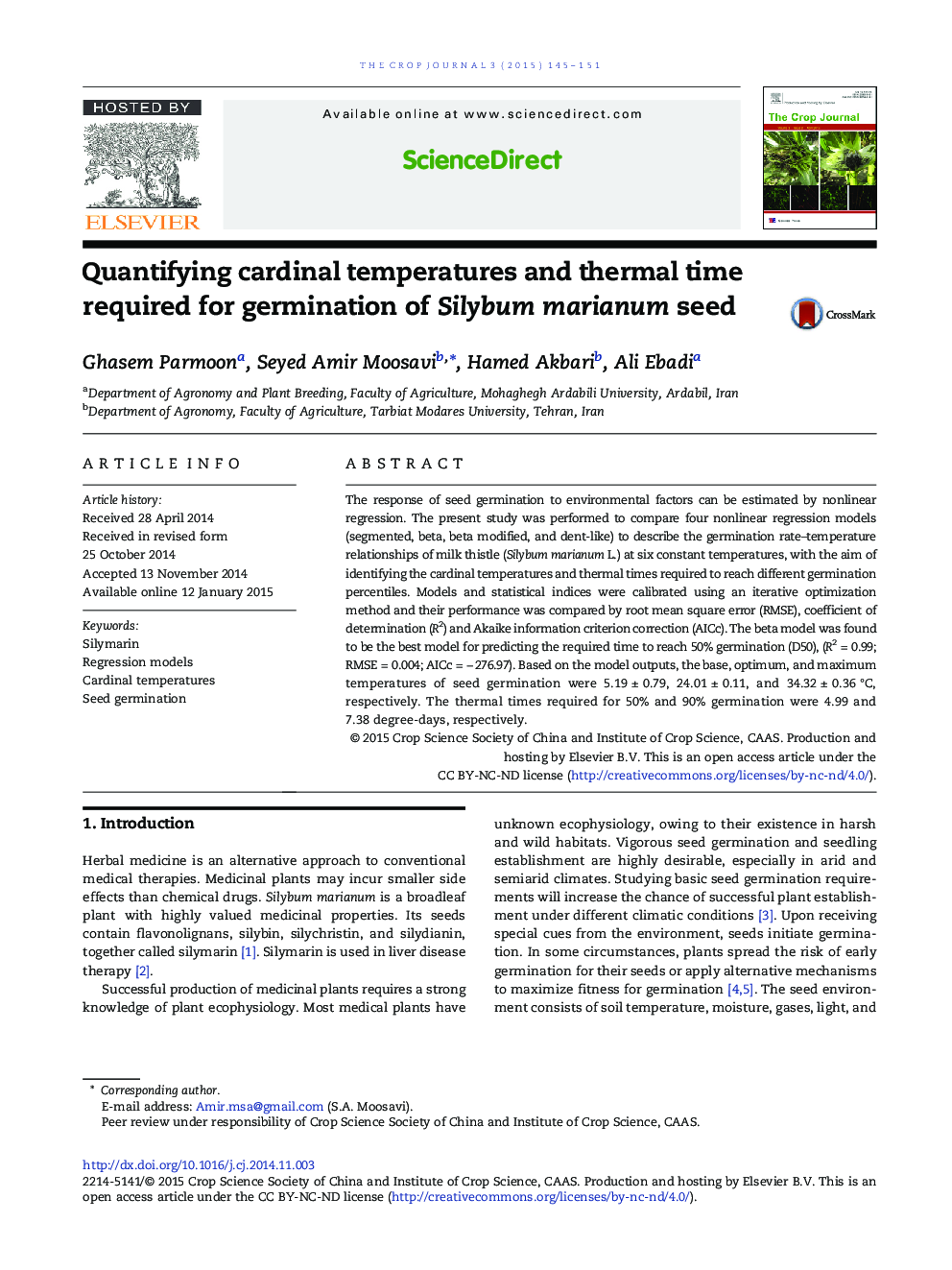| کد مقاله | کد نشریه | سال انتشار | مقاله انگلیسی | نسخه تمام متن |
|---|---|---|---|---|
| 2079487 | 1079872 | 2015 | 7 صفحه PDF | دانلود رایگان |
The response of seed germination to environmental factors can be estimated by nonlinear regression. The present study was performed to compare four nonlinear regression models (segmented, beta, beta modified, and dent-like) to describe the germination rate–temperature relationships of milk thistle (Silybum marianum L.) at six constant temperatures, with the aim of identifying the cardinal temperatures and thermal times required to reach different germination percentiles. Models and statistical indices were calibrated using an iterative optimization method and their performance was compared by root mean square error (RMSE), coefficient of determination (R2) and Akaike information criterion correction (AICc). The beta model was found to be the best model for predicting the required time to reach 50% germination (D50), (R2 = 0.99; RMSE = 0.004; AICc = − 276.97). Based on the model outputs, the base, optimum, and maximum temperatures of seed germination were 5.19 ± 0.79, 24.01 ± 0.11, and 34.32 ± 0.36 °C, respectively. The thermal times required for 50% and 90% germination were 4.99 and 7.38 degree-days, respectively.
Journal: The Crop Journal - Volume 3, Issue 2, April 2015, Pages 145–151
